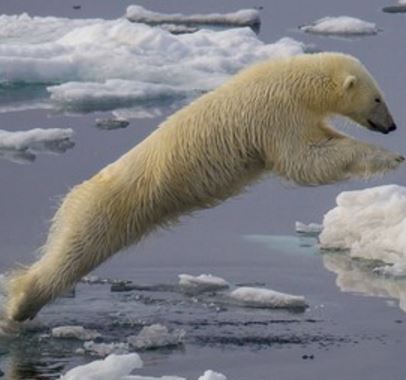Polar bear numbers globally are set to plunge by 30% because of shrinking sea ice over the next thirty-five to forty years. Arctic sea ice, which polar bears rely on for catching prey, is gradually melting away due to climate warming, says a new report issued by the International Union for Conservation of Nature (IUCN), after carrying out another assessment of the data regarding the Arctic Circle’s largest carnivorous mammal.
Sea habitat loss, caused by climate change, is the largest single threat to the long-term survival of the polar bear, (Ursus maritimus), according to the latest update of the IUCN Red List of Threatened Species.
The polar bear is among the best known animals on Earth that is facing habitat loss and possible eventual extinction due to global warming. Tens of thousands of other species are facing a similar fate. Among them are several species of fungi.
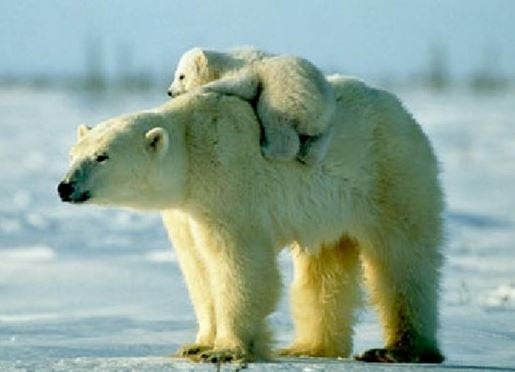 Longer periods each year of ice-free seas mean fewer polar bear cubs being born.
Longer periods each year of ice-free seas mean fewer polar bear cubs being born.
The authors of the new report say that over-fishing is today the main cause of the rapid decline in marine bony fish populations.
Alarming number of species facing extinction threat
The IUCN Red List contains 79,837 assessed species, of which 23,250 are facing a serious threat of extinction.
The scientists, whose aim was to predict future polar bear sub-populations due to melting sea ice, used the most recent sub-population and sea ice data to re-assess the polar bear’s status. They also used statistical models and computer simulations.
They believe their assessment is the most comprehensive one to date. They forecast that the global poplar bear population will plummet by more than 30% by the middle of this century. It is currently classed in the IUCN Red List as Vulnerable.
IUCN Director General, commented:
“Based on the latest, most robust science, this assessment provides evidence that climate change will continue to seriously threaten polar bear survival in the future.”
“Climate change impacts go far beyond this iconic species, and present a threat our planet has never faced before. Governments meeting at the climate summit in Paris later this month will need to go all out to strike a deal strong enough to confront this unprecedented challenge.”
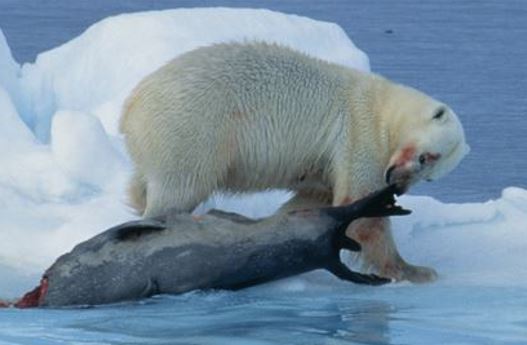 Polar bears depend on sea ice to access their prey.
Polar bears depend on sea ice to access their prey.
Sea ice shrinking more rapidly than forecast
The authors informed that the Arctic sea ice has been melting away at a much faster rate than most climate models had predicted. Over a 32-year period (1979-2011), September sea ice reduced in volume by a linear rate of 14% every ten years.
Without sea ice, polar bears cannot catch their prey and eventually starve. If there is no sea ice for five or more successive months, the bears will have to spend too long fasting, become more susceptible to disease, will be at greater risk of dying of starvation and having reproductive problems.
By the year 2099, huge regions of the Canadian Arctic Archipelago will be ice-free for more than five consecutive months of the year, according to the latest ice projections. By the middle of this century, other Arctic regions are predicted to reach the 5-month ice-free threshold.
As the Arctic sea warms up, prey species, such as ice seals, will become weaker and at higher risk of disease, which in turn places the polar bear at further risk.
According to the Arctic Human Development Report, Arctic Areas are inhabited by about 4 million people in a settlement area divided between eight countries: Denmark, Norway, Sweden, Finland, Russia, USA, and Canada. Polar bears are vital for their livelihoods.
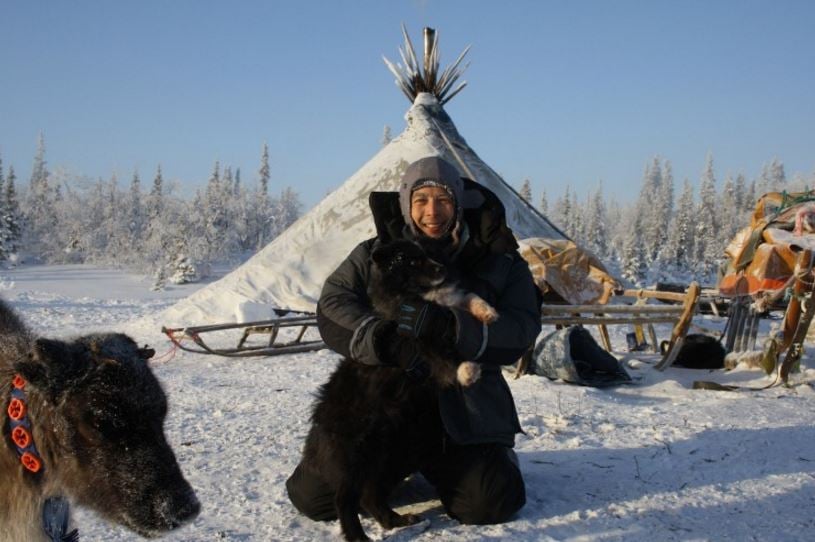 Polar bears are essential for the livelihoods of Arctic human populations, and, as the apex predators, they are vital for maintaining ecosystem balance in the region.
Polar bears are essential for the livelihoods of Arctic human populations, and, as the apex predators, they are vital for maintaining ecosystem balance in the region.
Another threat: Pollution and resource exploration
Polar bears are also facing other threats – worsening pollution, habitat change caused by development, and resource exploration.
Arctic region oil development, for example, poses many serious threats, including spills and increased human-bear interaction.
Dag Vongraven, Chair of IUCN’s Species Survival Commission’s (SSC) Polar Bear Specialist Group, commented:
“Whilst sea ice loss is the major threat to polar bears, the full range of current and potential threats must be considered in polar bear management plans.”
“It is encouraging that polar bear range states have recently agreed on a Circumpolar Action Plan – the first global conservation strategy to strive for the long-term persistence of polar bears in the wild. IUCN is actively working with those countries, providing scientific data and advice to help implement the agreed plan in the most efficient and cohesive way possible. We truly hope that the action plan will make a difference for polar bear conservation.”
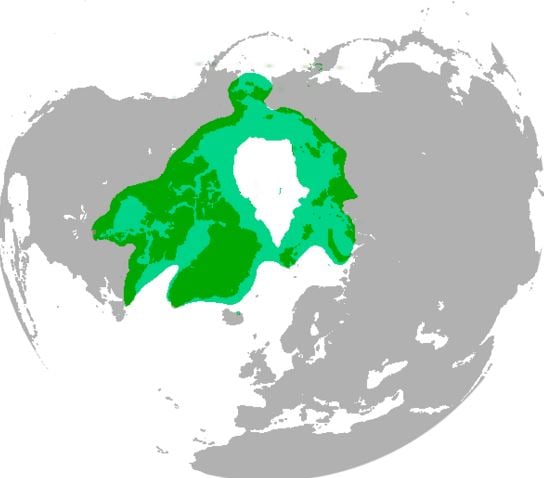 Polar bears are found in the Arctic Circle and adjacent land masses.
Polar bears are found in the Arctic Circle and adjacent land masses.
Several fungi facing threats
The IUCN Red List includes 29 species of fungus, twice as many compared to the previous assessment. Their main threats come from habitat degradation and loss – in most cases because of changing land use practices.
Leptonia carnea, a colourful blue fungus that occurs just in the coastal redwood forest of California, is now listed as Vulnerable. Droughts have become more severe and frequent, while the occurrence of fog has declined, factors which have detrimentally affected the area.
Continued logging of Sequoia sempervirens (redwood), which is listed as Endangered, has also contributed to L. carnea’s declining status.
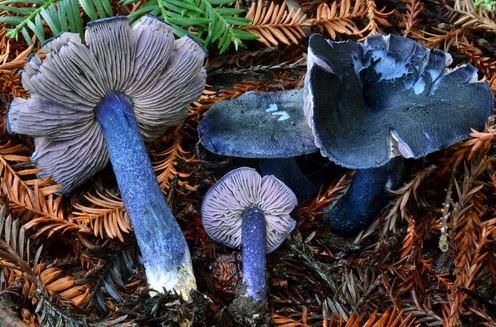 The survival status of Leptonia carnea has deteriorated because of California’s worsening droughts and less fog.
The survival status of Leptonia carnea has deteriorated because of California’s worsening droughts and less fog.
Ecosystem services provided by fungi are closely linked to the survival of plants and animals. They form an important part of the digestive system of cows, sheep and other ruminants, and have a symbiotic relationship with the majority of plant species.
Humans rely on fungi for several types of medications, including antibiotics such as Penicillin and statins. We also use fungi to brew beer and wine, make bread, cheese and several other foods.
The status of many marine bony fishes threatened
The IUCN Red List update reveals that many more marine bony fish species are today at risk of extention, especially in the East Central Atlantic and Greater Caribbean regions. The invasive lionfish, a type of venomous marine fish, is under further pressure.
There are 1,400 marine bony fishes in the global assessment, of which three percent are today threatened with extinction.
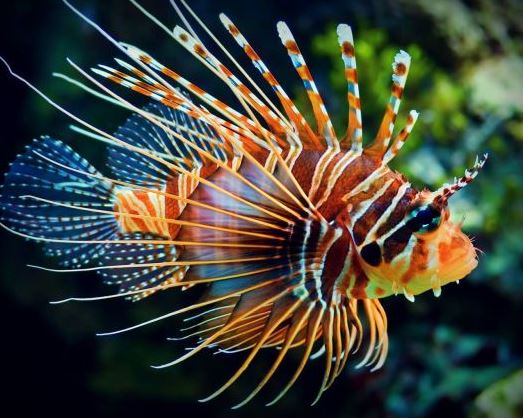 The status of the lionfish in the Caribbean is deteriorating.
The status of the lionfish in the Caribbean is deteriorating.
Marine bony fishes comprise the largest group of fish, and are both ecologically and economically important. If these species were lost, the livelihoods of more than 340 million humans would be significantly affected.
With the world’s population of humans forecast to double by 2040, this new data will be used by policymakers regarding fisheries management and conservation in the regions. It will also help experts identify which sites require the most immediate protection.
Manager of IUCN’s Marine Biodiversity Unit, Kent Carpenter, said:
“These assessments are the first of their kind, providing comprehensive baseline information within a specified region, which is critical for the designation and improved management of marine protected areas and threatened marine species.”
“The data should also lead to the development of more effective initiatives to improve national and regional fisheries management to maximise conservation benefits.”
Several plant species facing growing threat
The authors of the report believe that 24 newly assessed Critically Endangered species are most likely extinct now, mainly because of threats from invasive species and habitat destruction.
A Hawaiian flowering plant in the bellflower family – Haha (Cyanea kolekoleensis) – has been listed as Possibly Extinct. Many invasive plant species as well as pigs have threatened the plant’s habitat. Nobody has reported seeing a Haha since 1998.
In Madagascar, eleven orchid species are now listed as Critically Endangered/Possibly Extinct.
The Chilean arico water frog (Telmatobius pefauri) is listed as Critically Endangered/Possibly Extinct – nobody has reported seeing one since 1976.
Video – Polar bears searching for food
Polar bears travel further than any other bear looking for food. In this BBC video, David Attenborough talks about Polar Bears’ search for food.

